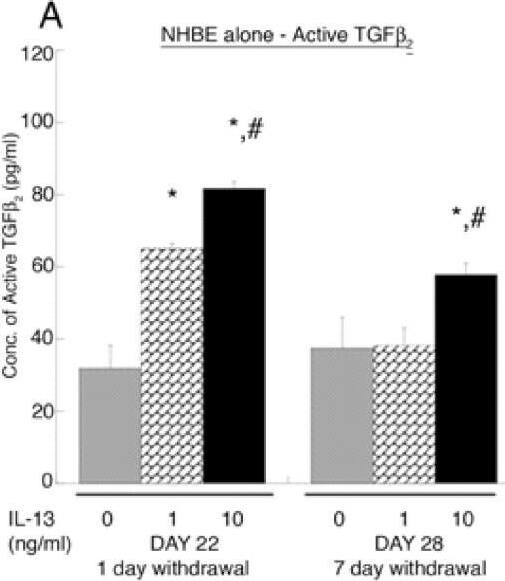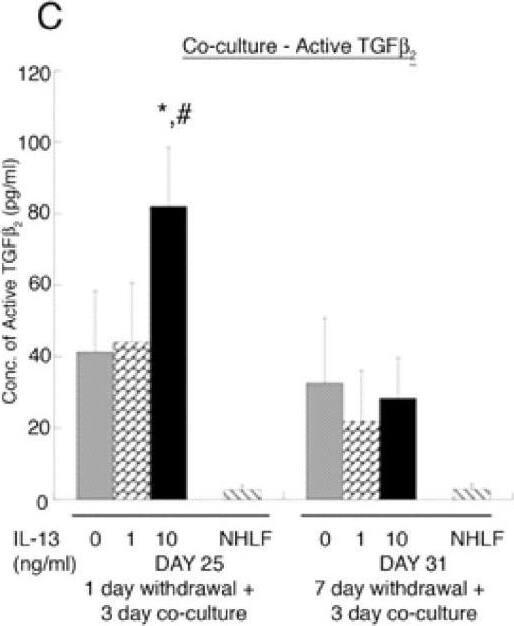Human TGF-beta 2 Quantikine ELISA Kit
R&D Systems, part of Bio-Techne | Catalog # DB250

Key Product Details
Assay Length
Sample Type & Volume Required Per Well
Sensitivity
Assay Range
Product Summary for Human TGF-beta 2 Quantikine ELISA Kit
Product Specifications
Assay Type
Format
Measurement
Detection Method
Conjugate
Reactivity
Specificity
Cross-reactivity
Interference
Precision
Intra-Assay Precision (Precision within an assay) Three samples of known concentration were tested on one plate to assess intra-assay precision.
Inter-Assay Precision (Precision between assays) Three samples of known concentration were tested in separate assays to assess inter-assay precision.
Cell Culture Supernates, Citrate Plasma, EDTA Plasma, Heparin Plasma, Serum
| Intra-Assay Precision | Inter-Assay Precision | |||||
|---|---|---|---|---|---|---|
| Sample | 1 | 2 | 3 | 1 | 2 | 3 |
| n | 20 | 20 | 20 | 20 | 20 | 20 |
| Mean (pg/mL) | 194 | 509 | 1044 | 196 | 500 | 1015 |
| Standard Deviation | 13.8 | 27.0 | 28.3 | 9.8 | 21.5 | 43.6 |
| CV% | 7.1 | 5.3 | 2.7 | 5.0 | 4.3 | 4.3 |
Recovery for Human TGF-beta 2 Quantikine ELISA Kit
To assess recovery of the assay, samples of various matrices were spiked with three concentrations of TGF-beta 2, activated, and measured in the assay.
| Sample Type | Average % Recovery | Range % |
|---|---|---|
| Cell Culture Media (n=5) | 101 | 89-113 |
| Citrate Plasma (n=5) | 107 | 93-116 |
| EDTA Plasma (n=5) | 101 | 95-111 |
| Heparin Plasma (n=5) | 102 | 89-113 |
| Serum (n=5) | 86 | 73-95 |
Linearity
To assess the linearity of the assay, samples were spiked with high concentrations of TGF-beta 2, activated and then serially diluted with Calibrator Diluent to produce samples with values within the dynamic range of the assay.

Scientific Data Images for Human TGF-beta 2 Quantikine ELISA Kit
Human TGF-beta 2 ELISA Standard Curve
Detection of Human TGF-beta 2 by ELISA
ELISA for active and total TGF-beta 2 in the media (A, B). At day 22, the concentration of active and total TGF-beta 2 in the media of IL-13 pre-treated NHBE at 1 and 10 ng/ml is significantly higher as compared to untreated NHBE (0 ng/ml of IL-13) media; * p < 0.01. At day 22 and day 28, the concentration of active TGF-beta 2 in the IL-13 pre-treated NHBE at 10 ng/ml is elevated compared to pre-treated NHBE at 1 ng/ml; # p < 0.01. At day 28 active and total TGF-beta 2 in IL-13 pre-treated NHBE at 10 ng/ml is increased compared to untreated NHBE; * p < 0.01. (C, D) At day 25, the NHBE pre-treated with IL-13 at 10 ng/ml, has higher levels of active and total TGF-beta 2 in the media as compared to untreated and pre-treated NHBE at 1 ng/ml co-cultured with NHLF (*, # p < 0.01 compared to 0 and 1 ng/ml IL-13 pre-treated NHBE co-cultured with NHLF, respectively). At day 31, there is no significant difference in the levels of active and total TGF-beta 2 between treatment conditions. NHLF represents levels of active and total TGF-beta 2 in media of fibroblasts in a collagen gel without NHBE co-culture. All experiments were performed using 3 donors, grown in duplicate, with 3–6 wells per condition. Image collected and cropped by CiteAb from the following open publication (https://respiratory-research.biomedcentral.com/articles/10.1186/1465-9921-9-27), licensed under a CC-BY license. Not internally tested by R&D Systems.Detection of Human TGF-beta 2 by ELISA
ELISA for active and total TGF-beta 2 in the media (A, B). At day 22, the concentration of active and total TGF-beta 2 in the media of IL-13 pre-treated NHBE at 1 and 10 ng/ml is significantly higher as compared to untreated NHBE (0 ng/ml of IL-13) media; * p < 0.01. At day 22 and day 28, the concentration of active TGF-beta 2 in the IL-13 pre-treated NHBE at 10 ng/ml is elevated compared to pre-treated NHBE at 1 ng/ml; # p < 0.01. At day 28 active and total TGF-beta 2 in IL-13 pre-treated NHBE at 10 ng/ml is increased compared to untreated NHBE; * p < 0.01. (C, D) At day 25, the NHBE pre-treated with IL-13 at 10 ng/ml, has higher levels of active and total TGF-beta 2 in the media as compared to untreated and pre-treated NHBE at 1 ng/ml co-cultured with NHLF (*, # p < 0.01 compared to 0 and 1 ng/ml IL-13 pre-treated NHBE co-cultured with NHLF, respectively). At day 31, there is no significant difference in the levels of active and total TGF-beta 2 between treatment conditions. NHLF represents levels of active and total TGF-beta 2 in media of fibroblasts in a collagen gel without NHBE co-culture. All experiments were performed using 3 donors, grown in duplicate, with 3–6 wells per condition. Image collected and cropped by CiteAb from the following open publication (https://respiratory-research.biomedcentral.com/articles/10.1186/1465-9921-9-27), licensed under a CC-BY license. Not internally tested by R&D Systems.Preparation and Storage
Shipping
Stability & Storage
Background: TGF-beta 2
Long Name
Alternate Names
Gene Symbol
Additional TGF-beta 2 Products
Product Documents for Human TGF-beta 2 Quantikine ELISA Kit
Product Specific Notices for Human TGF-beta 2 Quantikine ELISA Kit
For research use only
⚠ WARNING: This product can expose you to chemicals including N,N-Dimethylforamide, which is known to the State of California to cause cancer. For more information, go to www.P65Warnings.ca.gov.




